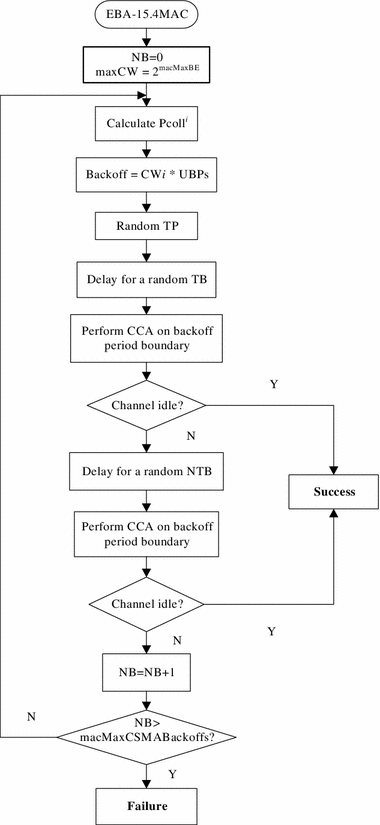Econpapers: On A Modified Backoff Algorithm For Mac
MANETs become a considerable interest nowadays. However, these types of networks are vulnerable to a large group of attacks, e.g., MAC layer attacks. Most of the previous researches related to security issues focus on detection of misbehaviors after it occurred. We propose a new way of thinking to evade occurrence of misbehaviors. A novel clustering algorithm is presented using analytic hierarchy process to elect clusterhead. Afterwards, the clusterhead is required to assign backoff values to originators in its transmission range, which are also the members in the corresponding cluster, rather than permitting the originators to choose backoff values. Meanwhile, the elected clusterhead also monitors whether originators obey the backoff values.
With the proposed scheme, the misuse of the backoff in MAC layer in 802.11 DCF can be prevented. Abstract: The performance of backoff algorithm plays an important role in designing efficient Medium Access Protocols for Ad hoc networks. In this paper, we propose three backoff algorithms for Ad hoc networks. The first algorithm aims at higher fairness, and the second aims at stronger adaptivity. Then, we combine the first two algorithms to propose an optimized backoff algorithm. We use NS2 to simulate Ad hoc network environment to evaluate the performance of our improved backoff algorithms.
The results show that our algorithms exhibit a significant improvement in throughput and fairness with the existing BEB and AASC algorithm. Abstract: In this paper, we focus on IEEE 802.11e enhanced distributed channel access (EDCA) protocol, which can provide QoS guarantee for multimedia applications in mobile ad hoc networks.
Econpapers: On A Modified Backoff Algorithm For Mac Pro
First, we briefly explain the concept of EDCA protocol. Then we implement EDCA protocol in GloMoSim via configuring special contention parameters for multimedia applications and introducing a virtual collision disposal mechanism in the MAC layer.
In the end, we provide performance analysis for EDCA protocol through plentiful simulations. The simulation results show an excellent performance of the EDCA protocol we proposed. Abstract: With the popularity of the IEEE 802.11 standards, many analytical delay studies for the Distributed Coordination Function (DCF) have been reported. In this paper, we analyze the additional idle durations that a tagged node needs to wait due to other nodes transmissions.
Separating the distributed inter-frame space (DIFS) and extended inter-frame space (EIFS) durations from the full time of a successful transmission, we provide a correct function analysis of the DIFS and EIFS durations and build a more accurate delay model for the IEEE 802.11 DCF. The theoretical analysis and simulation results prove that the proposed delay model is coincident with the real performance when the node number increases. Abstract: In the ad hoc network, the unfairness of the system will affect the quality of service seriously.
This paper proposed a new algorithm-FBGT, the algorithm use successfully send rate as measurement parameter, and use the Nash equilibrium of game theory as each flow transmission probability. The algorithm calculate every flow’s successfully send rate, and then exchange with the neighbor nodes, combing with the node's own information and neighbor node information to determine the backoff time to improve the system fairness. Due to FBGT algorithm taking into account the system’s local and global fairness and throughput, experimental analysis and data simulation showed the system's fairness index has been increased by 10% - 15%, the throughput of the system has also been improved to a certain degree. Abstract: A wireless ad hoc network is a self-configuring infrastructurelessh network of mobile devices connected by wireless. In order to support the basal networking functions like routing and packet forwarding, the nodes in wireless ad hoc network should be cooperate with each other due to the limited range of wireless transmission.
Multiinspector for mac download. Therefore, after opening all necessary plug-in instances it is sufficient to leave just one editor window open.
However, nodes are unwilling to relay packets for others considering the poor energy and bandwidth especially in the open community environment. Some approaches to stimulate nodes cooperation have been introduced recently. In this paper, we provide a novel method based on cross-layer design to solve the cooperation issues both in Mac and network layer. The method with the help of reputation mechanism and utility function based on game theoretical approach can promote nodes to cooperate and make the whole network to reach Nash equilibrium.
Econpapers: On A Modified Backoff Algorithm For Mac Free

Econpapers: On A Modified Backoff Algorithm For Mac Download
Abstract In the design of wireless networks the medium access control (MAC) protocols have a very high impact on the performance of the network. The IEEE 802.11 is widely accepted technology for the Wireless LANs has been used by wireless networks. Delay is one of the important parameter to measure the performance of the wireless networks. We give a delay analysis of the Distributed Coordination Function of IEEE 802.11 under modified Binary Exponential Backoff (BEB) Algorithm using Frequency Hoping Spread Spectrum (FHSS). In the modified BEB, initially the contention window size increases with the factor of √2 for first four collisions and after that for more collisions the size of contention window gets double.
The size of contention window varies between CWmin and CWmax. Markov chain has been used for the analysis of IEEE 802.11 DCF for both modes basic and RTS/CTS.
We have considered number of nodes and transmission probability to compute the delay for both the modes. The results show that the performance of RTS/CTS mode is better than the basic access mode. In this paper, we have numerically analyzed the IEEE 802.11 DCF by varying different parameters ( i.e. Number of nodes, transmission probability etc.).